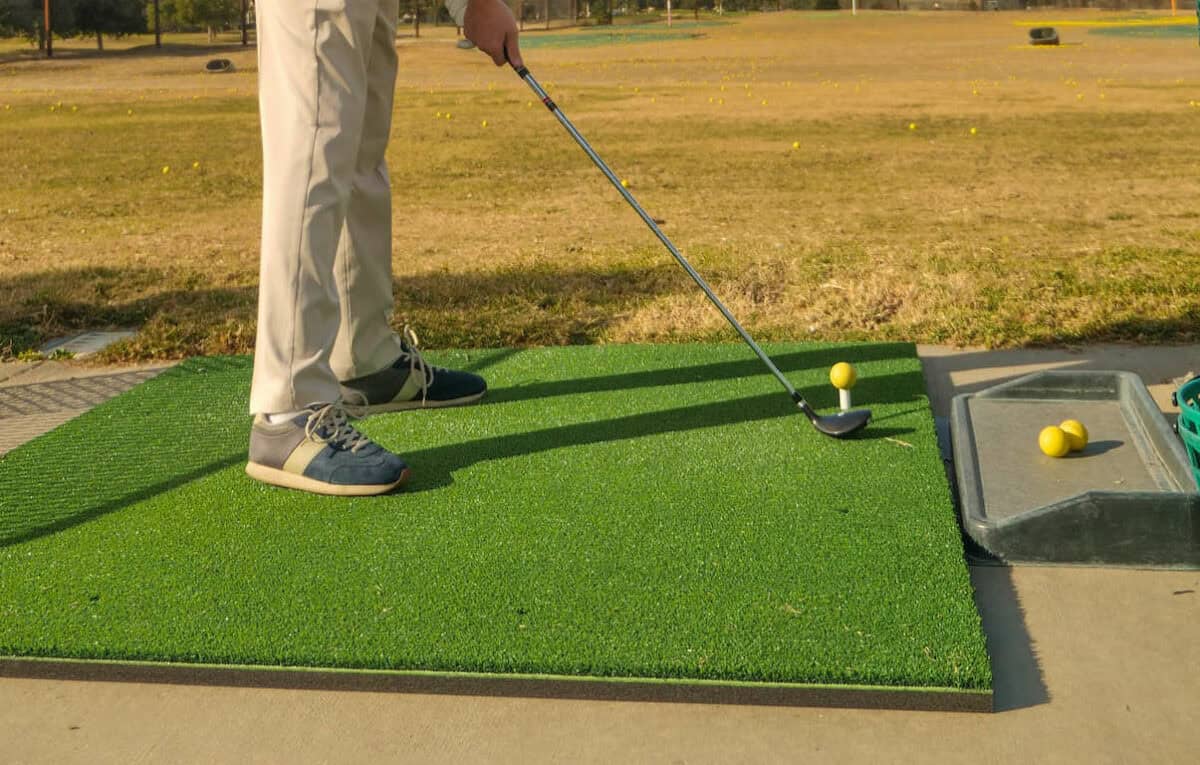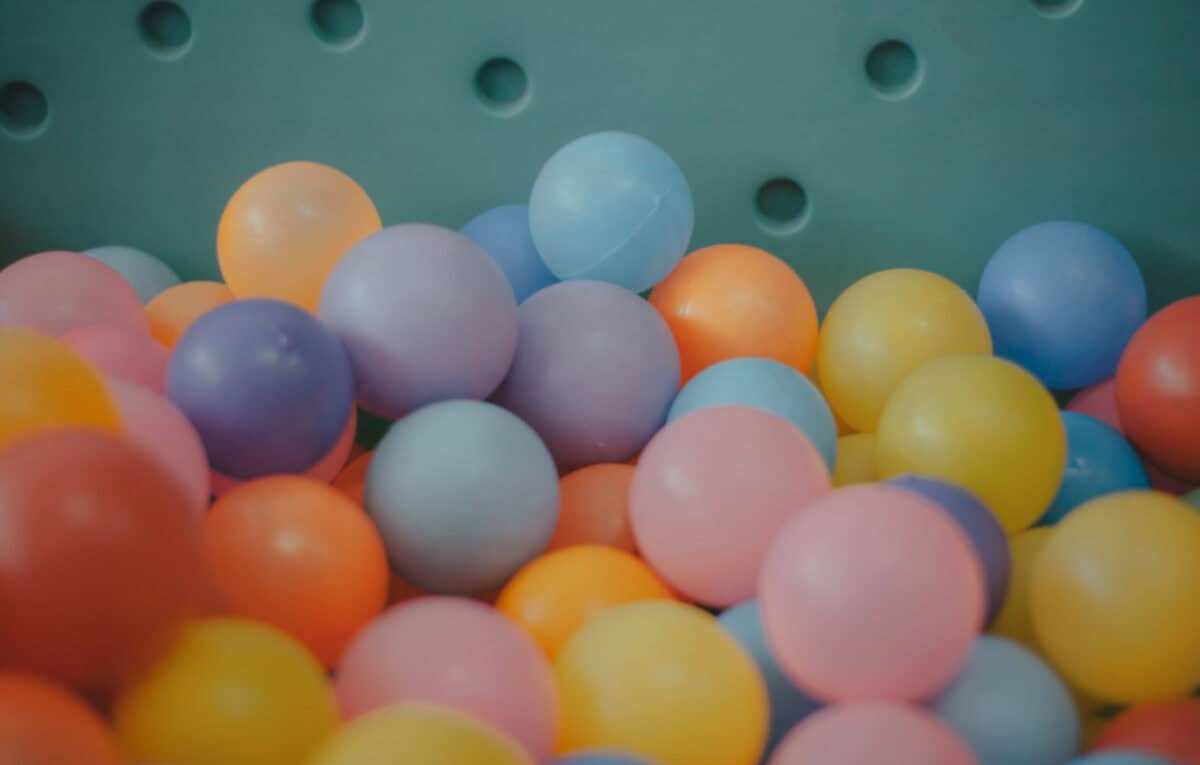Is Hitting Plastic Golf Balls Good Practice?
Many golfers encounter plastic golf balls at the driving range, mini golf courses, or as backyard novelty balls.
These plastic balls seem fun and inexpensive, which raises the question – can hitting plastic balls actually help your golf game and skills? Or should golfers stick to only traditional dimpled balls for proper practice?
Let’s examine the pros and cons of using plastic golf balls to determine if they benefit your technique or develop bad habits. We’ll also look at when and how plastic balls can supplement (but not replace) practice with real golf balls.

The Case for Using Plastic Golf Balls
Here are some potential benefits recreational golfers cite for utilizing plastic golf balls for practice and amusement:
- The inexpensive cost allows practicing freely without losing expensive balls
- Come in bright colors good for nighttime and indoor use
- Make less noise outdoors for backyard practice
- Softer and lighter plastic reduces the risk of property damage
- Float on water hazards rather than sinking
- Can practice short game by chipping into playground balls
- Novelty balls like whiffles or mini balls provide entertainment
- Easy to track in flight due to bright colors
- Less affected by temperature extremes versus real balls
While they shouldn’t fully replace normal balls, plastic balls do offer recreational conveniences.
The Case Against Using Plastic Balls
However, there are some downsides golf instructors point out regarding plastic golf balls compared to regulation dimpled balls:
- Plastic limits the ability to compress the ball at impact, reducing the feel
- Flight patterns and distances are less realistic
- Balls knuckle and move erratically since no dimples allow consistent flight
- Chipping and putting skill development is hampered without a true short-game feel
- Misses and thin shots can be masked by plastic balls
- Clubface and turf interaction differs significantly
- Ball-striking fundamentals degrade from compensating for plastic flights
So while plastic balls have novelty value, they lack the realism needed to ingrain quality ball striking technique.
Key Differences Between Plastic and Regulation Golf Balls
Plastic golf balls differ in key ways from approved dimpled golf balls:
- No dimples, which stabilize flight and increase carry distance
- Firmer plastic materials don’t compress the same as layered golf ball cores
- Much lighter weight than the 1.5-1.6 ounce regulation golf balls
- A smoother surface generates lower spin rates and less greenside control
- Various shapes and constructions unlike uniform real balls
- Often highly durable but with less responsiveness
These structural variations lead to significant performance gaps.
When Plastic Balls May Work for Practice
While lacking realism, there are some situations where plastic balls could supplement regular golf ball practice:
- As training aids to ingrain central impact strikes
- For brief warm-up sessions to get loose before rounds
- For hitting shots off hard surfaces like water without losing real balls
- For basic practice swings, partial shots, and drills requiring durability
- For entertainment through novelty mini-golf type games
- For youth instruction with floating balls on lakes for retrieving
Understanding the limitations, plastic balls have a minor role in enhancing real practice with approved balls.

Problems that Develop from Relying on Plastic Balls
While they offer recreational utility, relying primarily on plastic balls for golf practice can develop some poor habits:
- Swing flaws get masked since plastic absorbs poor strikes more forgivingly.
- Odd flight shapes prevent proper swing paths and face learning.
- The lack of spin gives unrealistic short-game feedback and feel.
- Failure to compress can raise dynamic loft extra high at impact.
- Technical swing adjustments degrade absent true ball feedback.
- Strength and swing speed development is hampered.
Plastic balls should supplement the primary practice with real dimpled balls to prevent ingraining bad habits over time.
Tips to Maximize Practice with Plastic Balls
If supplementing real golf ball practice with plastic balls occasionally, these tips help maximize benefits:
- Maintain the same technical setup, posture, and swing positions as with real balls.
- Focus on central contact point compression through impact.
- Use limited flight shots only to gauge the swing path and face angle.
- Favor firmer plastic balls with some weight to better emulate real balls.
- Use plastic around holes without trouble requiring precision shots.
- Combine with video analysis to prevent compensation in motions.
The key is isolating the use of plastic balls to specific, limited scenarios while maintaining proper mechanics.
Takeaways on Plastic Golf Balls for Practice
In conclusion, while plastic golf balls offer some recreational utility, they lack the performance realism required to properly develop golf skills for most players.
Carefully incorporating plastic balls into supplementary practice when using regulation balls as the primary focus can provide some isolated benefits.
But over-reliance on plastic balls can establish counterproductive technique habits.
For quality instruction and ingraining fundamentally sound swing mechanics, approved dimpled golf balls hit into real course landing areas and greens remain essential.
But plastic balls can serve a limited role when used smartly in the process. Just don’t let them become a crutch that takes away from real ball practice.
